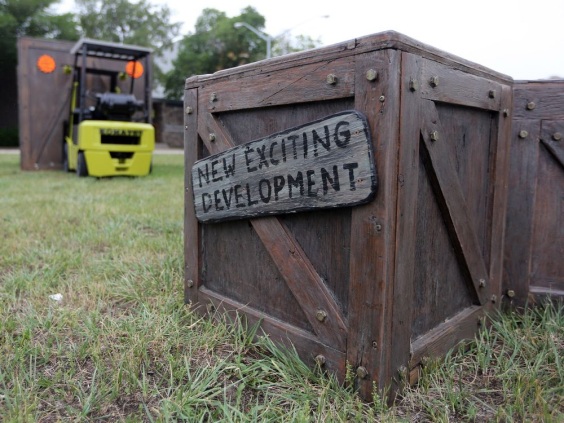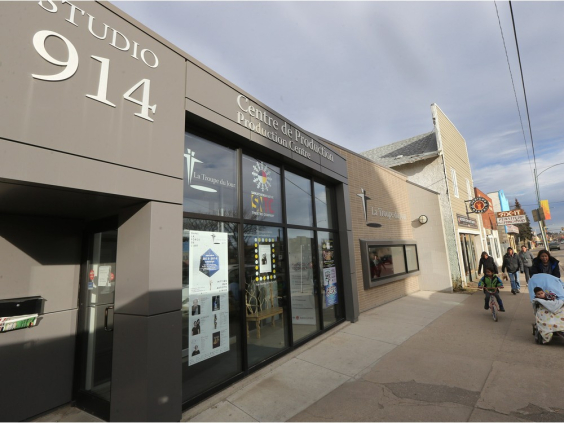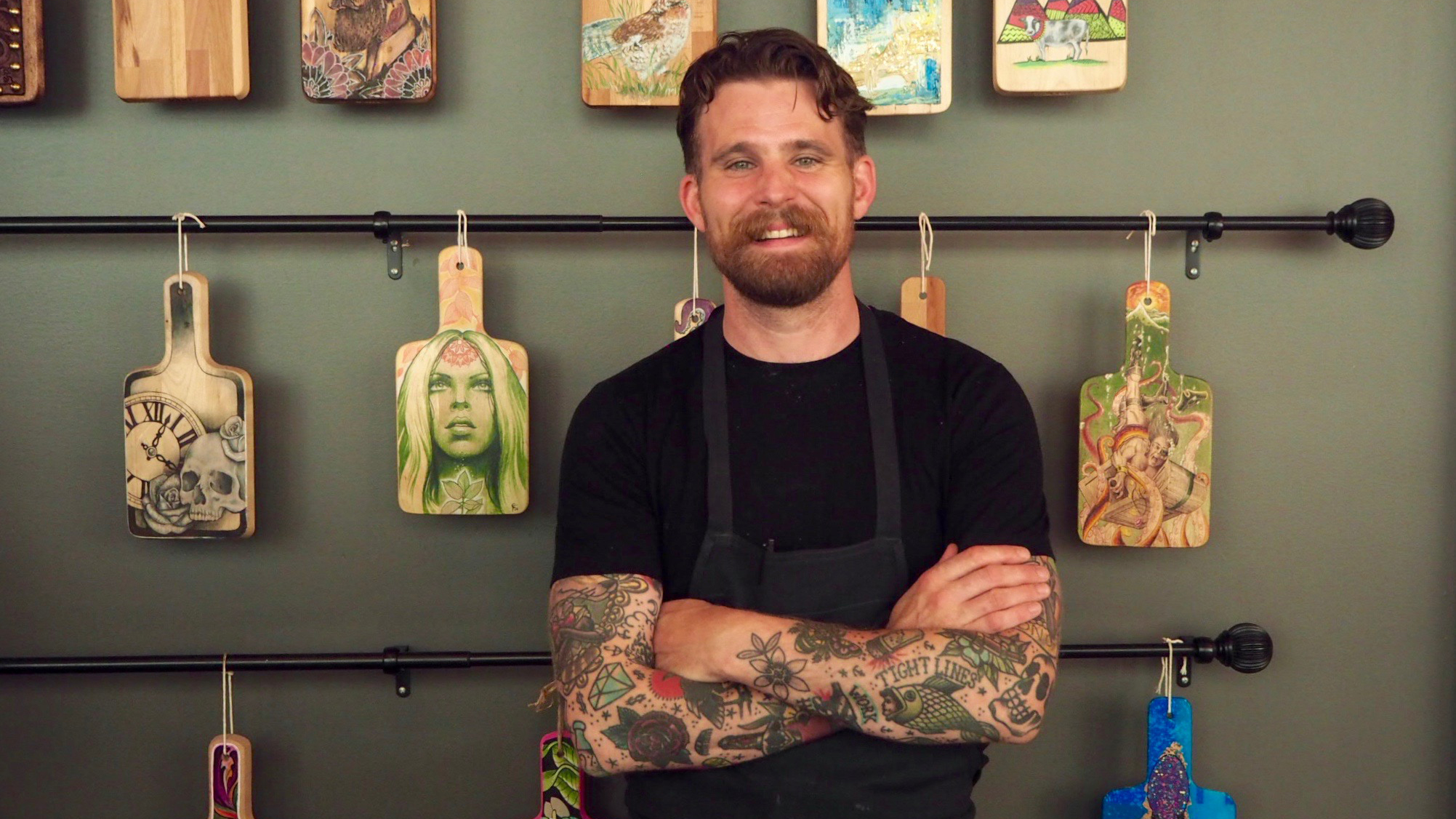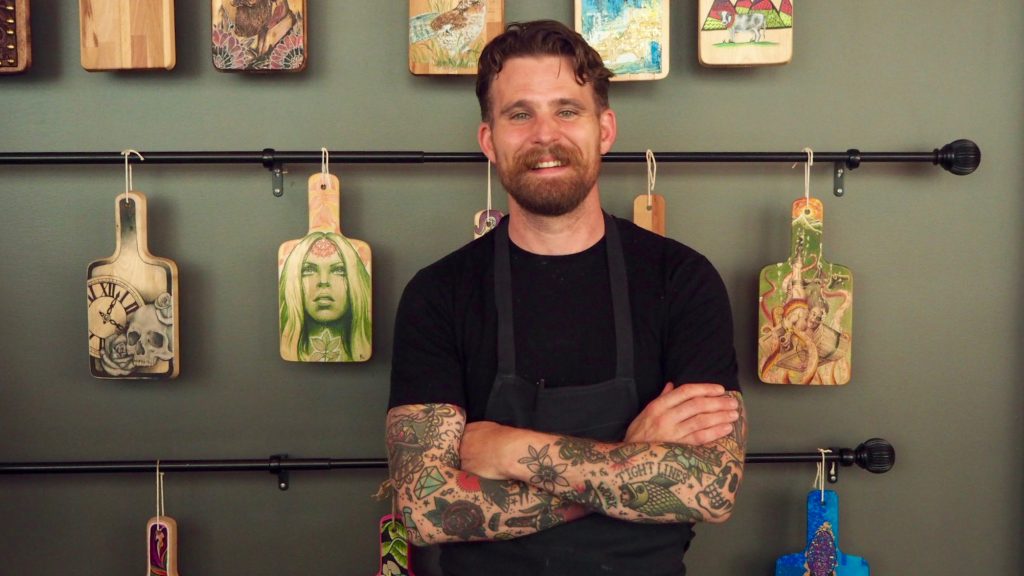Betty Ann Adam • Saskatoon StarPhoenix

A forklift amid an assortment of crates at the bottom of the Broadway Bridge is the basis of one of the new pieces of art being installed as part of the City of Saskatoon’s 2016 Placemaker Program. The partnership with the Downtown, Broadway, Sutherland and Riversdale Business Improvement Districts (BIDs) aims to engage audiences with temporary works in civic spaces, Betty Ann Adam writes.
Coming Soon (Stoon)
Outdoor artwork in Saskatoon about the potential of new development
An ordinary warehouse machine and anonymous crates that could contain anything and which are labelled “Coming Soon” create a moment of expectation akin to the anticipation that meets signs of progress and development, says artist Jason Gress of Nanaimo, B.C. “There’s a kind of utopia that happens when you see those signs go up,” announcing a new highrise or shopping mall, he said. “There’s this utopia until the shovels go in the ground. It’s all about the anticipation that our lives are going to be so much better if we live there or shop there. Nothing can go wrong in that space. There’s no cost overruns. There’s no noise from construction. There’s no disruption to traffic or competition for buying and all that kind of stuff. I was interested in that space where everything was still (potential), that newness and anticipation of development without all the problems and hassles of development.”
Signs of the times
The installation will feature a changing assortment of signs over its two years on the boulevard between 19th Street and Fourth Avenue. They will relate to historical development in Saskatoon, such as bridges, significant architectural structures or civic changes like Nutana joining Saskatoon. There’ll also be speculative signs, such as, “Celebrate the 100th anniversary of the Remai Modern fall 2117,” and some that relate to current construction.
Frozen moment
Saskatoon’s weather will play a role when Gress returns to the city in November to encase his piece in ice. Before he erects forms around the elements to hold the water as it freezes, he’ll install some new signs that are likely to remain obscured and mysterious until the thaw. He’ll answer questions about the installation at a Meet the Artist event in November.
New and coming installations
- Priscilla, Queen of the Prairies, by M. Craig Campbell of Saskatoon, is an oiled metal sculpture with masculine and feminine attributes that was recently installed on Broadway Avenue at 10th Street, where it will stay for three years. The sculpture is meant to open a discussion on gender and sexuality and encourage the viewer to accept people as they are without judgment.
- Members of the public have been helping to create felt beads that express their hopes for individual and collective reconciled futures at a series of free public workshops. The beads will be incorporated into a web-like art piece called Catch YOUR Dream, which will be displayed on 33rd Street and Avenue F for one year, starting on Sept. 17. Heike Fink of Prud’homme and Joseph Naytowhow of Saskatoon will host their fourth workshop on July 26 from 4 p.m. to 6 p.m. at the Mayfair Branch Library.
- Toronto artist Jerry Rugg, a.k.a. Birdo, will paint an aerosol mural called Home on the River at River Landing on the abutment wall of the Senator Sid Buckwold Bridge. It will be kept there for three years.
- The Paper Wildlife Conservancy, by Cate Francis of Saskatoon, is hand-screened prints depicting five species native to the South Saskatchewan River valley. They will be installed throughout the Broadway district for one year.
- Saskatoon carver Darren Gowan’s stone bison will live on Central Avenue at 112th Street, near the Sutherland Memorial Hall for three years beginning this fall.
- Josh Jacobson of Saskatoon will create an aerosol mural, called Habitual Synthesis, on the south-facing wall of the Drinkle No. 3 Building on Third Avenue, where it will remain for five years.
- An LED light sculpture made with found and reclaimed objects will depict a Chinese junk boat. Eastern Dream of the West, by Jeremy Tsang of Toronto, will be installed on 20th Street West and Avenue D at the Little Chief Service Station in the fall of 2016, for about eight months.









